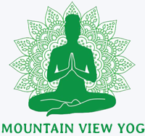About Iyengar Yoga
Iyengar Yoga
“It is through the alignment of the body that I discovered the alignment of my mind, self, and
intelligence.” B.K.S. Iyengar
This method of Yoga is named after its founder B.K.S Iyengar, a student of T. Krishnamacharya.
B.K.S. Iyengar developed his innovative and inspired approach to yoga through intense practice and self-
study. His famous book, Light on Yoga, has been continuously in print since originally published in 1966.
According to Mr. Iyengar, “The yoga I teach is purely Astanga yoga, known as the eight limbs of yoga. My
pupils who follow me call it ‘Iyengar Yoga’ to distinguish it from the teachings of others.”
Iyengar yoga is for anyone and everyone, in all stages of life. Certified Iyengar yoga teachers are well qualified and experienced in helping each student to find their own level in each pose, and Props may be used to make each pose accessible to all and for the purpose of learning the correct action.
Because Iyengar yoga focuses on postural alignment, it is particular good for postural and structural problems. And the fact that you have to give all of your attention to the precise details of each pose requires effort and concentration which relieve stress and anxiety. Iyengar yoga is all about quality of movement rather than quantity, to encourage safety and honesty throughout your practice.
Teaching is oriented towards gradual but steady progress, rather than quick and fleeting results. Each Iyengar Yoga class is a unique sequence developed by an Iyengar certified teacher to guide students through a safe and systematic progression. Through skilled instruction and practice, students learn to penetrate beyond the physical body to the inner layers of mind, energy and spirit, gaining vitality, clarity and calm through the practice.
B.K.S Iyengar

B.K.S. Iyengar was born on December 14th 1918 in Bellur, a small village in Karnataka, India.
He was introduced to yoga by a renowned yogi, T.Krishnamacharya that was his brother in low, for the aim of resolving his health issues as a young boy. He started teaching in 1936 and was introduced to the west in 1954 by the violinist Yehudi Menuhin and with the publication of his book ‘Light on Yoga’ in 1966.
B.K.S. Iyengar is considered by many to be the world’s foremost exponent of yoga, having devoted his entire lifetime to its study and teaching. Guruji (as he is fondly known by his students) continued to practice well into his nineties until his sad demise in August 2014. He will continue to be a constant source of inspiration to his devoted students all over the world.
“Yoga is a light, which once lit, will never dim. The better your practice, the brighter the flame.” B.K.S. Iyengar

Dr. Geeta S. Iyengar
Dr Geeta S. Iyengar, eldest daughter of Yogacharya B. K. S. Iyengar is considered by her students to be the world’s leading female yoga teacher. She studied yoga with her father from an early age and, after graduating from high school in 1961, she began substituting for her father when he was away on international teaching tours. Since her father’s retirement in 1984, she was co-director, with her brother Prashant S. Iyengar, of the Ramamani Iyengar Memorial Yoga Institute (RIMYI) Pune, as well as undertaking her own international teaching tours. Geetaji adapted her father’s method of yoga to the specific requirements of women. Specific asanas, pranayama and sequences are given for different stages in a woman’s life including menstruation, pregnancy, postpartum, and menopause.
Perhaps Geetaji’s most remarkable quality was that she always taught to her absolute maximum. Whatever she may have been feeling, she taught with the same incredible dynamism. She could not allow anyone, even in a convention of hundreds of students, to hide away or not be helped when she saw their difficulties. She ‘saw’ everything and when she observed that someone was not understanding or misaligned or in pain she could not ignore it. She included everybody in her class and if the class did not understand what she was teaching, she would repeat and explain until she was satisfied that each and every one understood.
Geetaji died on 16 December 2018, aged 74, two days after her father’s birth centenary.
“In an asana, the mind has to reach inside the body to find a quiet space until a point comes where perfect balance is felt. If the mind is wandering while practicing, then one is not fully present, and there can be no union. Involvement, interpenetration and insight are the required qualities for the practitioner.” Geeta Iyengar

